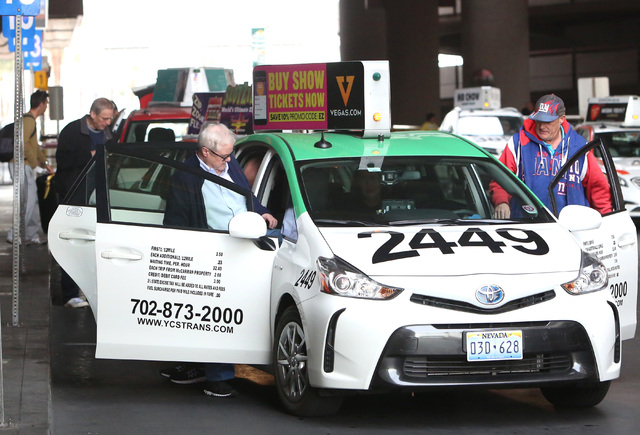EDITORIAL: The Nevada Taxicab Authority should be shouting from the rooftops for lawmakers to repeal as many existing regulations as possible that make it harder for the taxi companies to adapt to the increased competition

The Nevada Taxicab Authority still doesn’t have a clue.
As the industry takes a pounding from ride-sharing services such as Uber and Lyft — a pounding that will continue to become more severe — members of the authority apparently cling to the fantasy that they can return to the days when the powerful taxi cartel had a stranglehold on the local market.
The authority on Thursday voted unanimously to hold off on any changes regarding local taxi rates or surcharges, hoping instead that lawmakers will come to the industry’s rescue when they reconvene in Carson City next month. That’s unlikely to happen. Any legislative effort to hamstring ride-sharing outfits for the benefit of the cab companies will be met with fierce resistance, as it should be.
For the first 11 months of 2016, taxi trips in Southern Nevada fell by more than 16 percent from the same time in 2015, according to authority figures. Revenues for the 16 taxi companies operating in Clark County were down 13 percent over the same period.
The consumers have spoken.
Stan Olsen, who chairs the five-member panel, has repeatedly expressed a desire to see the Legislature “level the playing field” to protect the local cab industry. That’s a code phrase for “regulate Uber and Lyft out of business.” He was at again last week, complaining that he’d heard reports of out-of-state ride-sharing drivers coming to Las Vegas to work the CES.
The market responding to demand. The horror!
Here’s a thought. If Mr. Olsen is truly concerned about the industry, he should be shouting from the rooftops for lawmakers to repeal as many existing regulations as possible that make it harder for the taxi companies to adapt to the increased competition.
The $3 surcharge that the authority imposes on credit card payments for cab rides? Let individual cab companies decide whether to levy it. Long-hauling? Let the taxi firms copy Uber and Lyft, which have no such problems given customers know the cost of a trip up front. A one-size fits all rate structure down to the tenth of a mile? Get rid of it and let the industry actors compete on price. Fuel charges? Again, free the taxi owners to decide for themselves what to include in their rate calculations.
Instead, the emphasis for Mr. Olsen and his board is to use the industry’s lobbying muscle to make it more difficult for the competition to offer a service that the public clearly wants and prefers.
That’s precisely backward. The industry’s long-term survival hinges on a simple mantra: Free the cab companies.